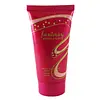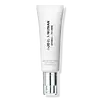What's inside
What's inside
 Key Ingredients
Key Ingredients

 Benefits
Benefits

 Concerns
Concerns

 Ingredients Side-by-side
Ingredients Side-by-side

Water
Skin ConditioningCyclopentasiloxane
EmollientButylene Glycol
HumectantParfum
MaskingDioctyldodecyl Dodecanedioate
EmollientGlycerin
HumectantCyclohexasiloxane
EmollientDeceth-7
EmulsifyingAcrylamide
PEG-40 Hydrogenated Castor Oil
EmulsifyingDimethicone
EmollientAleurites Moluccanus Seed Oil
Skin ConditioningTocopherol
AntioxidantTocopheryl Acetate
AntioxidantSqualane
EmollientCaprylyl Glycol
EmollientGrape Seed Oil PEG-8 Esters
Skin ConditioningIsohexadecane
EmollientMacadamia Ternifolia Seed Oil
EmollientSqualene
EmollientButyrospermum Parkii Butter
Skin ConditioningGlycolipids
Skin ConditioningPhytosterols
Skin ConditioningPPG-26-Buteth-26
Skin ConditioningPolysorbate 80
EmulsifyingHexylene Glycol
EmulsifyingCarbomer
Emulsion StabilisingTriethanolamine
BufferingTetrasodium EDTA
Dimethiconol
EmollientPhenyl Methicone
EmollientBis-Phenylpropyl Dimethicone
Alpha-Isomethyl Ionone
PerfumingBenzyl Salicylate
PerfumingButylphenyl Methylpropional
PerfumingCitral
PerfumingCitronellol
PerfumingCoumarin
PerfumingGeraniol
PerfumingHexyl Cinnamal
PerfumingHydroxyisohexyl 3-Cyclohexene Carboxaldehyde
MaskingLimonene
PerfumingLinalool
PerfumingPhenoxyethanol
PreservativeWater, Cyclopentasiloxane, Butylene Glycol, Parfum, Dioctyldodecyl Dodecanedioate, Glycerin, Cyclohexasiloxane, Deceth-7, Acrylamide, PEG-40 Hydrogenated Castor Oil, Dimethicone, Aleurites Moluccanus Seed Oil, Tocopherol, Tocopheryl Acetate, Squalane, Caprylyl Glycol, Grape Seed Oil PEG-8 Esters, Isohexadecane, Macadamia Ternifolia Seed Oil, Squalene, Butyrospermum Parkii Butter, Glycolipids, Phytosterols, PPG-26-Buteth-26, Polysorbate 80, Hexylene Glycol, Carbomer, Triethanolamine, Tetrasodium EDTA, Dimethiconol, Phenyl Methicone, Bis-Phenylpropyl Dimethicone, Alpha-Isomethyl Ionone, Benzyl Salicylate, Butylphenyl Methylpropional, Citral, Citronellol, Coumarin, Geraniol, Hexyl Cinnamal, Hydroxyisohexyl 3-Cyclohexene Carboxaldehyde, Limonene, Linalool, Phenoxyethanol
Water
Skin ConditioningIsopropyl Myristate
EmollientParfum
MaskingGlycerin
HumectantGlyceryl Stearate
EmollientCetyl Alcohol
EmollientPhenoxyethanol
PreservativeCarbomer
Emulsion StabilisingSorbitan Tristearate
EmulsifyingSodium Hydroxide
BufferingEthylhexylglycerin
Skin ConditioningAloe Barbadensis Leaf Juice
Skin ConditioningSodium Phytate
Potassium Sorbate
PreservativeArgania Spinosa Kernel Oil
EmollientSodium Benzoate
MaskingTocopherol
AntioxidantIngredients Explained
These ingredients are found in both products.
Ingredients higher up in an ingredient list are typically present in a larger amount.
Carbomer is a polymer of acrylic acid. Its main role is to create a gel consistency.
A high amount of carbomer can cause pilling or balling up of products. Don't worry, most products contain 1% or less of carbomer.
Glycerin is already naturally found in your skin. It helps moisturize and protect your skin.
A study from 2016 found glycerin to be more effective as a humectant than AHAs and hyaluronic acid.
As a humectant, it helps the skin stay hydrated by pulling moisture to your skin. The low molecular weight of glycerin allows it to pull moisture into the deeper layers of your skin.
Hydrated skin improves your skin barrier; Your skin barrier helps protect against irritants and bacteria.
Glycerin has also been found to have antimicrobial and antiviral properties. Due to these properties, glycerin is often used in wound and burn treatments.
In cosmetics, glycerin is usually derived from plants such as soybean or palm. However, it can also be sourced from animals, such as tallow or animal fat.
This ingredient is organic, colorless, odorless, and non-toxic.
Glycerin is the name for this ingredient in American English. British English uses Glycerol/Glycerine.
Learn more about GlycerinParfum is a catch-all term for an ingredient or more that is used to give a scent to products.
Also called "fragrance", this ingredient can be a blend of hundreds of chemicals or plant oils. This means every product with "fragrance" or "parfum" in the ingredients list is a different mixture.
For instance, Habanolide is a proprietary trade name for a specific aroma chemical. When used as a fragrance ingredient in cosmetics, most aroma chemicals fall under the broad labeling category of “FRAGRANCE” or “PARFUM” according to EU and US regulations.
The term 'parfum' or 'fragrance' is not regulated in many countries. In many cases, it is up to the brand to define this term.
For instance, many brands choose to label themselves as "fragrance-free" because they are not using synthetic fragrances. However, their products may still contain ingredients such as essential oils that are considered a fragrance by INCI standards.
One example is Calendula flower extract. Calendula is an essential oil that still imparts a scent or 'fragrance'.
Depending on the blend, the ingredients in the mixture can cause allergies and sensitivities on the skin. Some ingredients that are known EU allergens include linalool and citronellol.
Parfum can also be used to mask or cover an unpleasant scent.
The bottom line is: not all fragrances/parfum/ingredients are created equally. If you are worried about fragrances, we recommend taking a closer look at an ingredient. And of course, we always recommend speaking with a professional.
Learn more about ParfumPhenoxyethanol is a preservative that has germicide, antimicrobial, and aromatic properties. Studies show that phenoxyethanol can prevent microbial growth. By itself, it has a scent that is similar to that of a rose.
It's often used in formulations along with Caprylyl Glycol to preserve the shelf life of products.
Tocopherol (also known as Vitamin E) is a common antioxidant used to help protect the skin from free-radicals and strengthen the skin barrier. It's also fat soluble - this means our skin is great at absorbing it.
Vitamin E also helps keep your natural skin lipids healthy. Your lipid skin barrier naturally consists of lipids, ceramides, and fatty acids. Vitamin E offers extra protection for your skin’s lipid barrier, keeping your skin healthy and nourished.
Another benefit is a bit of UV protection. Vitamin E helps reduce the damage caused by UVB rays. (It should not replace your sunscreen). Combining it with Vitamin C can decrease sunburned cells and hyperpigmentation after UV exposure.
You might have noticed Vitamin E + C often paired together. This is because it is great at stabilizing Vitamin C. Using the two together helps increase the effectiveness of both ingredients.
There are often claims that Vitamin E can reduce/prevent scarring, but these claims haven't been confirmed by scientific research.
Learn more about TocopherolWater. It's the most common cosmetic ingredient of all. You'll usually see it at the top of ingredient lists, meaning that it makes up the largest part of the product.
So why is it so popular? Water most often acts as a solvent - this means that it helps dissolve other ingredients into the formulation.
You'll also recognize water as that liquid we all need to stay alive. If you see this, drink a glass of water. Stay hydrated!
Learn more about Water